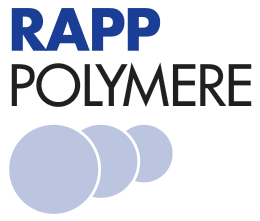€ 123,00*
SP200110150160.5G
Product information
HypoGel® is a hydrophilic Gel® type resin which combines high capacities with good solvent compatibility. Glycol spacers with n = 5 or 10 EO units separate the reactive sites from the polystyrene matrix and modify the hydrophobic properties of the polystyrene backbone. Due to the spacer effect the functional group shows a higher mobility which results in higher kinetic rates and high resolution NMR spectra from immobilized compounds on the bead. The resin is compatible to a wide range of solvents and in contrast to polystyrene even polar solvents like methanol or ethanol can be used. These resins show high loading and a hydrophilicity between polystyrene and TentaGel®.
Due to the lack of amide bonds and of benzylic linkages as well as the very good swelling properties in a broad variety of solvents this resin is well suited for solid phase syntheses of secondary sulfonamides and carboxamides.
In this resin the glycol spacer contains 5 EO units which separate the reactive sites from the polystyrene matrix.
Literature
L 17 HypoGel®
- Rapp W., Recent Advances in Synthesis and Use of High Load Spacer-modified Supports in SPS in Innovation and Perspectives in Solid Phase Synthesis & Combinatorial Libraries, Collected Papers of the 7th International Symposium 2001 (Epton, R., Ed.); Mayflower Wordwide: Kingswinford, England, 2002, 9.
L 31 4-Formyl-3-methoxy-phenoxyethyl Polystyrene Resins (2-Methoxy-4-alkoxybenzaldehyde Resin)
- Fivush, A. M.; Willson, T. M. AMEBA: An Acid Sensitive Aldehyde Resin for Solid Phase Synthesis. Tetrahedron Lett. 1997, 38 (41), 7151-7154. doi: 10.1016/s0040-4039(97)01771-1.
- Sarantakis, D.; Bicksler, J. J. Solid Phase Synthesis of Sec-Amides and Removal from the Polymeric Support under Mild Conditions. Tetrahedron Lett. 1997, 38 (42), 7325-7328. doi: 10.1016/s0040-4039(97)01779-6.
- Dörner , B.; et al. Preparation of Carboxy-Modified Peptide Fragments using Alkyoxybenzaldehyde Resins in Peptides 1998 Proceedings of the Twenty-Fifth European Peptide Symposium, 1998 Budapest, Hungary; (Bajusz, S.; Hudesz, F, Eds.); Akadémiai K: Budapest, Hungary, 1999, 90. ISBN: 9630576228
- Mazurov, A. Traceless Synthesis of Benzimidazoles on Solid Support. Bioorg. Med. Chem. Lett. 2000, 10 (1), 67-70. doi: 10.1016/s0960-894x(99)00592-2.
- Swayze, E. E. Secondary Amide-Based Linkers for Solid Phase Organic Synthesis. Tetrahedron Lett. 1997, 38 (49), 8465-8468. doi: 10.1016/s0040-4039(97)10281-7.
- Bilodeau, M. T.; Cunningham, A. M. Solid-Supported Synthesis of Imidazoles: A Strategy for Direct Resin-Attachment to the Imidazole Core. J. Org. Chem. 1998, 63 (9), 2800-2801. doi: 10.1021/jo980027p.
- Farrant, E.; Rahman, S. S. A Solid-Phase Synthetic Route to Substituted 7-Azabenzimidazoles Suitable for Combinatorial Library Synthesis. Tetrahedron Lett. 2000, 41 (28), 5383-5386. doi: 10.1016/s0040-4039(00)00859-5.
- Caddick, S.; Hamza, D.; Wadman, S. N. Solid-Phase Intermolecular Radical Reactions 1. Sulfonyl Radical Addition to Isolated Alkenes and Alkynes. Tetrahedron Lett. 1999, 40 (40), 7285-7288. doi: 10.1016/s0040-4039(99)01525-7.

